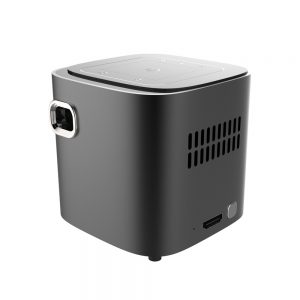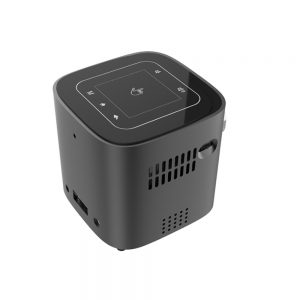We all know that the parameters of the projector include brightness, contrast, resolution, focus, projection ratio, lamp life, etc., and even the 3D effect of a 3D projector, so if you want to learn more about the types of projectors and various parameters, it is also a matter Relatively large knowledge. Today, I will talk about the projector lumens in detail, which is one of the important reference indexes for the projector.
So what is lumen?
For a projector, the accurate expression should be the luminous flux. This is the first key indicator of the projector. Under the same technology, the higher the lumens, the higher the brightness, and the price will increase accordingly. The so-called lumens is a physical unit that describes luminous flux, and physics is interpreted as the total emitted luminous flux produced by a candle at a solid angle. The unit of luminous flux is lumens, English lm. It is stated here that the national standard allows the measured value to be 20% lower than the manufacturer’s nominal value, that is, the measured value may only have 80% brightness of the manufacturer’s nominal value. At the same time, the current situation of the industry is to increase the price of projectors, and the virtual standard of LED projectors is more serious.
How many lumens is suitable for us to buy a projector?
At present, the projector market includes household projectors, educational projectors, business projectors, and engineering projectors. The lumens of each projector is different for each purpose projector.
Household projector: brightness of 1000-2500lm is fine, if it is a shutter 3D projector, brightness of 2000-3500lm is more suitable.
Educational projector: 100 to 150 inches of ambient light at 50lx, about 2500-5000lm, because there will be a lot of projectors used during the day.
Business projector: 80-150 inch ambient light 40lx, about 2500-4000lm.
Engineering projector: any environment, usually above 5000lm.
The above lumens value is for reference only, and changes according to the environmental brightness and the size of the environment if necessary. For example, when the ambient light is close to zero, the comfortable brightness per unit area of the human eye is a constant value, so we calculated that
In the space of 8~15 square meters, the projected image size of 60~100 inches, the lumen of the projector is recommended to choose between 250~650lm;
In the space of 16~30 square meters, the projected image size of 100~150 inches, the projector lumen is recommended to choose between 700~1500lm.
In a space of 31~50 square meters, the projected image size of 150~220 inches, the projector lumen is recommended to choose between 1600~3200lm.
In a space of 51~75 square meters, the image size of 220~280 inches is projected, and the lumen of the projector is recommended to choose between 3300~5000lm.
In a space larger than 76 square meters, projecting an image size of 280 inches or more, and the lumen of the projector is recommended to choose an engineering projector above 5000lm.
When the environment is no longer close to full black, because the dark field image will be affected by the ambient light, it is necessary to greatly increase the projection brightness to reduce the impact of the ambient light, but this method is likely to make the white field image brightness exceed the comfortable brightness range of the human eye. Become light pollution. Even if the economy is ample and not bad, it is not the best strategy to blindly increase the projection brightness. Under the circumstances that can create conditions, choose a projector, it is best for you to do appropriate shading for the environment.
Specifically, the actual lumen parameters need to be based on the size of the environment and the diagonal size of the screen projected by the projector. To put out the required size, the projector is installed at a distance corresponding to the projection screen. We choose projectors, install our own needs, and install the actual environment to choose what type of projector and lumen parameters.









